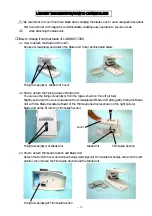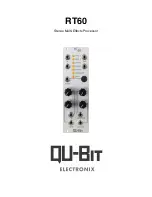
Technical description
Item no. 10301096, Revision 03
13 ( 40 )
5.3
Cooling
The HF spindle does not feature built-in cooling. However, this means that it
has a lower power than an HF spindle with cooling.
Note: Extension of the service life through heat dissipation.
Heat is produced during operation of the HF spindle. The temperature of the
HF spindle should not 45° C as this shortens the service life of the
bearing.
u
Check the temperature of the HF spindle on the housing.
u
Dissipate the heat using the spindle holder.
5.3.1
Cooling via spindle holder
Example of design:
Air-cooled spindle holder
Example of design:
Liquid-cooled spindle holder
To increase the power of the HF spindle, the heat generated must be dissi-
pated via the spindle holder (optional accessory).
If the spindle holder is to be produced in-house:
Ü
Contact
Nakanishi Jaeger GmbH
.
Ü
Request the tolerances and production plan for the spindle holder.
Ü
Produce the spindle holder from a thermally-conductive material (e.g. alu-
minum).
Ü
Observe the dimensions of the clamping range in the Technical Specifica-
tions
section. Make sure that the HF spindle is enclosed by the spin-
dle holder to the specified length.
Ü
Add cooling fins or holes (greater heat dissipation) to the external surface
of the spindle holder.
5.4
Sealing air
For guidelines on air quality,
see "Air purity classes (ISO
8573-1)
" section.
The sealing air prevents foreign bodies such as chips and liquids (e.g. emul-
sions) from entering the HF spindle.
Ü
Check that air escapes at the front between the housing and the rotating
parts of the HF spindle.
5.5
Pneumatic tool change
For guidelines on air quality,
see "Air purity classes (ISO
8573-1)
" section.
The tool change or tool taper change is performed pneumatically.
During this, a mechanism is operated inside the HF spindle which clamps, re-
leases, or ejects the tool taper or collet.














































